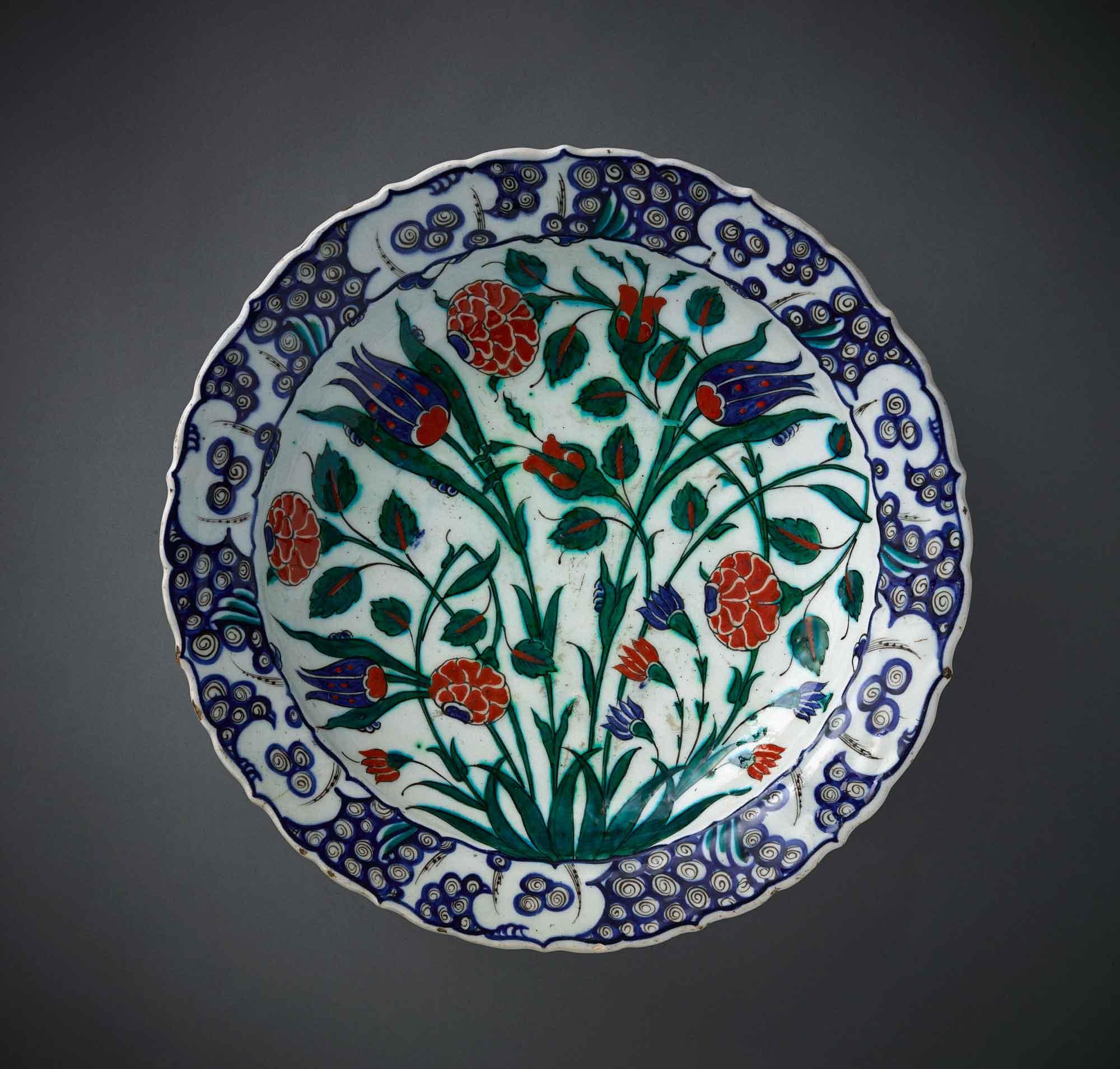Click on the image to zoom
Dish
- Accession Number:AKM687
- Place:Iznik, Turkey
- Dimensions:Diameter 34.3 cm, height 7.4 cm
- Date:1570–80
- Materials and Technique:Fritware, underglaze-painted
During the first half of the sixteenth century, artists of the royal design atelier of the Ottoman court developed a new decorative style characterized by its bright colours and naturalistic depiction of flowers. The floral composition on this dish with its tulips, carnations, and roses in red and blue on a white background is typical of the production of the Ottoman imperial kilns in the city of Iznik. Similar patterns of floral designs were used on textiles, carpets, book illuminations, and tiles, including some splendid examples in the Aga Khan Museum’s collection. The consistency of the Ottoman floral style helped establish a distinctive and singular visual brand for the Ottoman Empire and its arts. It is during this period that tulips caught Europe’s attention when they were first introduced there by Ogier Ghiselin de Busbecq, the Austrian ambassador to the Ottoman court).
Note: This online resource is reviewed and updated on an ongoing basis. We are committed to improving this information and will revise and update knowledge about this object as it becomes available.


